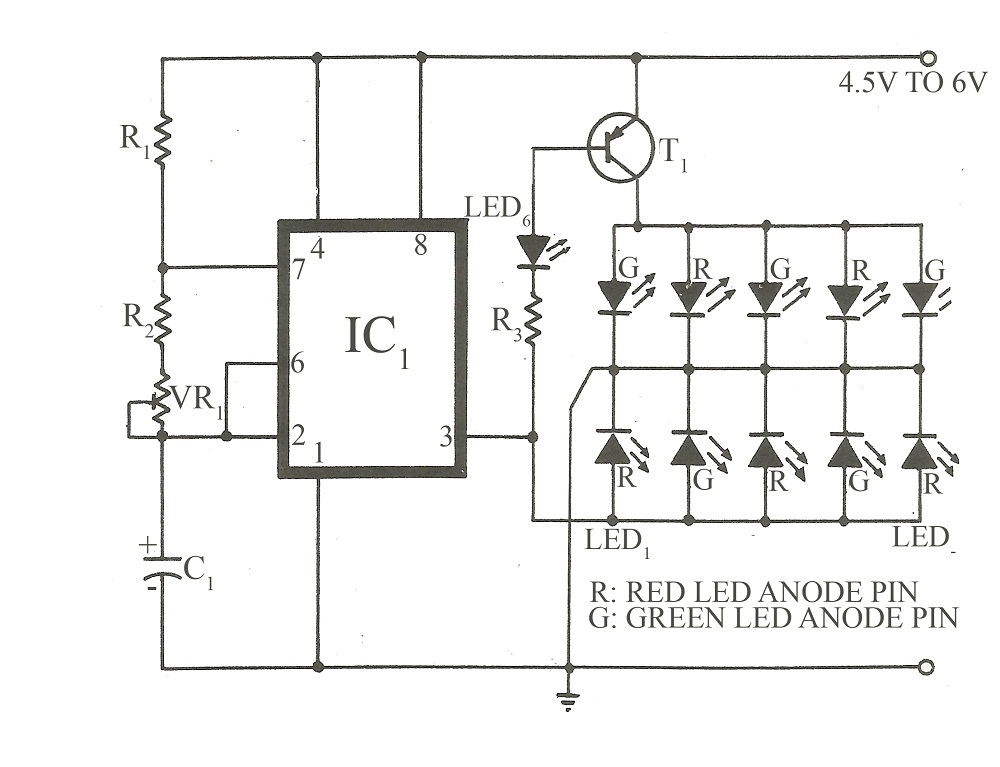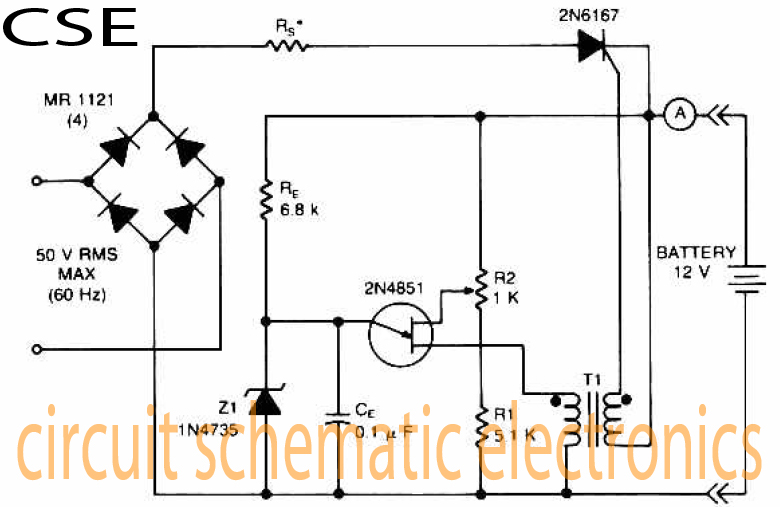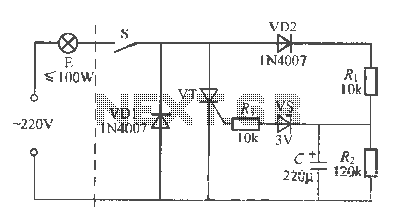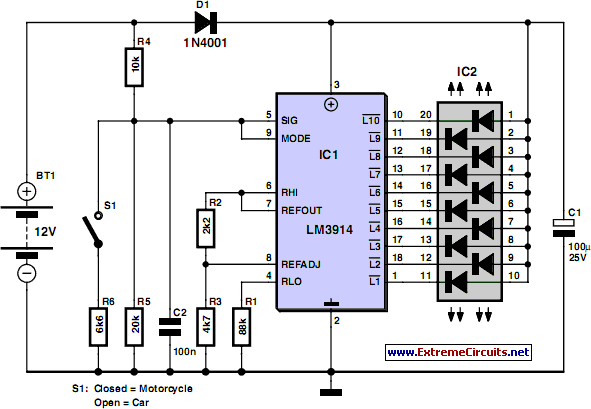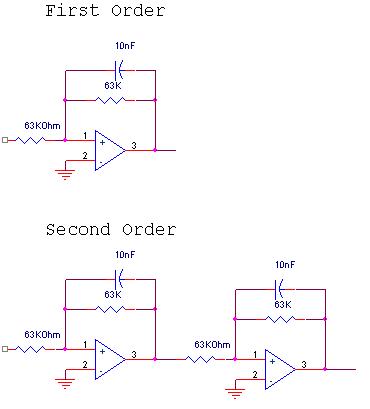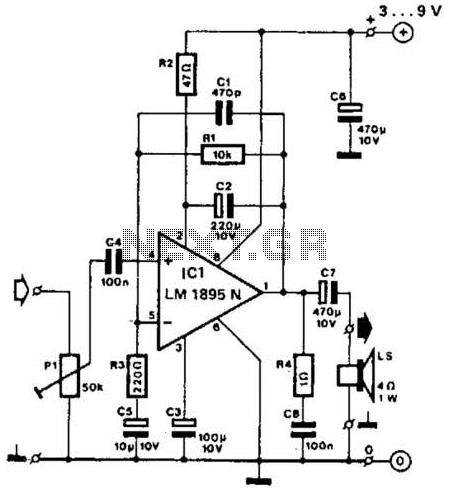
pwm Why is the MOSFET driver in this circuit dying
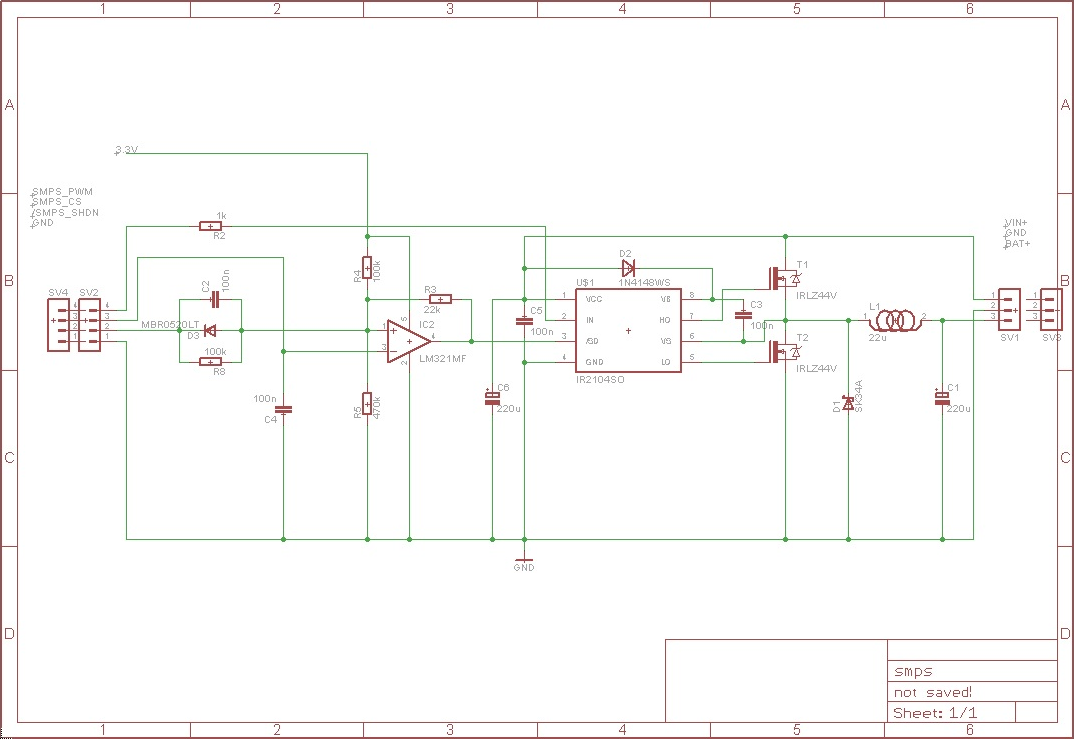
The circuit receives an input voltage (Vin), which is processed through a Switch Mode Power Supply (SMPS) utilizing two MOSFETs driven by an IR2104 driver. The output is directed to the battery positive terminal (Bat+). An LM321 operates as a latch, enabling the microcontroller (MCU) to control and monitor the IR2104. The left connector is linked to the MCU, while the right connector supplies power lines. The circuit includes a Pulse Width Modulation (PWM) signal for the IR2104, a current sense (CS) pin for safety that can deactivate the IR2104, and a shutdown (SHDN) signal. The circuit functions with a purely resistive load, but issues arise when a battery is connected, causing the driver to fail while the MOSFETs remain intact. The power supply is current-limited to 30mA. A power regulation loop feeds the PWM input for the SMPS; however, this regulation is simplistic and not very responsive. There are concerns regarding the driver’s failure, particularly if the PWM signal reaches 100% duty cycle, which could lead to the upper MOSFET being permanently closed. Although a 100% duty cycle is unsuitable for a charge pump driver, it should not damage the MOSFETs, which appear to be functional. There is speculation about the possibility of a MOSFET bridge causing damage through its gate at high voltage, despite looking operational during testing.
The circuit design incorporates a Switch Mode Power Supply (SMPS) that utilizes two MOSFETs, which are essential for efficient voltage conversion. The IR2104 driver plays a critical role in managing the switching of these MOSFETs, enabling rapid transitions that are necessary for the SMPS operation. The LM321 is used as a latch, providing a feedback mechanism that allows the MCU to monitor the state of the IR2104 and control its operation based on system requirements.
The left connector serves as the interface for the MCU, facilitating communication and control signals, while the right connector is responsible for delivering the necessary power lines to the circuit. The PWM signal generated for the IR2104 is crucial for controlling the duty cycle of the MOSFETs, thereby regulating the output voltage to the battery. The inclusion of a current sense pin (CS) enhances safety by providing the capability to disable the IR2104 if excessive current is detected, preventing potential damage to the circuit components.
The circuit has been tested with a purely resistive load, demonstrating functionality; however, complications arise when a battery is introduced. The driver experiences failure under these conditions, although the MOSFETs remain operational, indicating that the issue may lie within the driver circuitry rather than the power switching elements themselves. The power supply is designed to limit current to 30mA, which serves as a protective measure against overcurrent conditions.
The power regulation loop that feeds into the PWM signal is noted to be simplistic, utilizing a basic ramp algorithm that may not provide the responsiveness required for dynamic load conditions. This lack of sophistication in the control loop could contribute to the driver’s failure, especially under high duty cycle conditions. It is hypothesized that a 100% duty cycle may cause the upper MOSFET to remain continuously closed, potentially leading to thermal or electrical stress that could compromise the integrity of the driver.
Further investigation into the behavior of the MOSFETs under high voltage conditions is warranted, as there is a possibility that a MOSFET bridge configuration could unintentionally cause damage through gate voltage spikes, despite appearing functional during standard testing conditions. This highlights the importance of thorough testing and validation of circuit components under various operational scenarios to ensure reliability and performance.The circuit takes Vin, passes it through a SMPS with two MOSFETS (driven by the ir2104 that dies) and into Bat+. The LM321 is just a latch that allow the MCU to control and read the ir2104). The connector in the left comes from the MCU, the right one holds the power lines. PWM(PWM signal for the 2104) CS (current sense pin, for safety -it can stop the ir2104-) SHDN (a shutdown signal) Using a purely resistive load instead of the battery works. Then the battery is connected and the driver gives up. The MOSFET doesn`t die, though. This using a current-limited (to 30mA) power supply. There is a power regulation loop (that feeds the PWM that goes into SMPS_PWM) which is not really good or responsive (it is a very simple ramp algo), but even then, why would the driver die One running theory is that, if the PWM were to be 100% you`d have an upper MOSFET that`s permanently closed, and that`d be a problem, but I don`t see why (and sure a 100% duty cycle won`t work in a charge pump driver, but that should affect the MOSFET, not the driver. ) The MOSFETs are not broken in any visible way. Could a MOSFET bridge so it would kill something through its gate at a high voltage but look okay when testing
🔗 External reference
The circuit design incorporates a Switch Mode Power Supply (SMPS) that utilizes two MOSFETs, which are essential for efficient voltage conversion. The IR2104 driver plays a critical role in managing the switching of these MOSFETs, enabling rapid transitions that are necessary for the SMPS operation. The LM321 is used as a latch, providing a feedback mechanism that allows the MCU to monitor the state of the IR2104 and control its operation based on system requirements.
The left connector serves as the interface for the MCU, facilitating communication and control signals, while the right connector is responsible for delivering the necessary power lines to the circuit. The PWM signal generated for the IR2104 is crucial for controlling the duty cycle of the MOSFETs, thereby regulating the output voltage to the battery. The inclusion of a current sense pin (CS) enhances safety by providing the capability to disable the IR2104 if excessive current is detected, preventing potential damage to the circuit components.
The circuit has been tested with a purely resistive load, demonstrating functionality; however, complications arise when a battery is introduced. The driver experiences failure under these conditions, although the MOSFETs remain operational, indicating that the issue may lie within the driver circuitry rather than the power switching elements themselves. The power supply is designed to limit current to 30mA, which serves as a protective measure against overcurrent conditions.
The power regulation loop that feeds into the PWM signal is noted to be simplistic, utilizing a basic ramp algorithm that may not provide the responsiveness required for dynamic load conditions. This lack of sophistication in the control loop could contribute to the driver’s failure, especially under high duty cycle conditions. It is hypothesized that a 100% duty cycle may cause the upper MOSFET to remain continuously closed, potentially leading to thermal or electrical stress that could compromise the integrity of the driver.
Further investigation into the behavior of the MOSFETs under high voltage conditions is warranted, as there is a possibility that a MOSFET bridge configuration could unintentionally cause damage through gate voltage spikes, despite appearing functional during standard testing conditions. This highlights the importance of thorough testing and validation of circuit components under various operational scenarios to ensure reliability and performance.The circuit takes Vin, passes it through a SMPS with two MOSFETS (driven by the ir2104 that dies) and into Bat+. The LM321 is just a latch that allow the MCU to control and read the ir2104). The connector in the left comes from the MCU, the right one holds the power lines. PWM(PWM signal for the 2104) CS (current sense pin, for safety -it can stop the ir2104-) SHDN (a shutdown signal) Using a purely resistive load instead of the battery works. Then the battery is connected and the driver gives up. The MOSFET doesn`t die, though. This using a current-limited (to 30mA) power supply. There is a power regulation loop (that feeds the PWM that goes into SMPS_PWM) which is not really good or responsive (it is a very simple ramp algo), but even then, why would the driver die One running theory is that, if the PWM were to be 100% you`d have an upper MOSFET that`s permanently closed, and that`d be a problem, but I don`t see why (and sure a 100% duty cycle won`t work in a charge pump driver, but that should affect the MOSFET, not the driver. ) The MOSFETs are not broken in any visible way. Could a MOSFET bridge so it would kill something through its gate at a high voltage but look okay when testing
🔗 External reference
